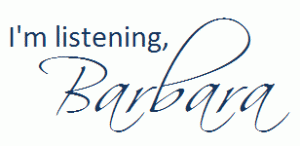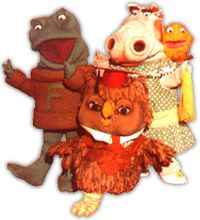Slides to accompany a workshop I am sharing with the fine folks at Lanier Upshaw, Inc., in Lakeland, FL, on 8 August 2011.
Bookmarks to sites mentioned in the presentation are listed in my Diigo (social bookmarking) account.
Slides to accompany a workshop I am sharing with the fine folks at Lanier Upshaw, Inc., in Lakeland, FL, on 8 August 2011.
Bookmarks to sites mentioned in the presentation are listed in my Diigo (social bookmarking) account.

As summer comes to a close, college students might want to take some time and get back up to speed on what’s happening in public relations and social media before they return to their classes in the fall. Here’s an updated version of a post I wrote last June that should be helpful to you.
~~~~~~~~~~~~~~~~~~~~
Let’s face it . . . whether you’re a PR student, practitioner or faculty member, we’re all busy. So how can you get (and stay) up to speed with the ever-changing world of public relations? Here’s a quick guide to how I stay current in public relations.
Some of my favorite podcasts are: For Immediate Release, Inside PR, PRStudCast, Trafcom News, Marketing Over Coffee and Coming Up PR. My favorite time to listen to podcasts is during my daily two-mile walks in this sweltering Florida heat. I also listen to them when I drive, work out and clean the house. Some people prefer to listen to podcasts on their computers; my preference is listening to them on my Samsung Epic or iPod.
Here’s a short video on how to subscribe to and download podcasts using iTunes. If you’re not an iTunes person, you may want to visit Podcast Alley, where you can find thousands more podcasts. You can listen to the podcasts directly from the website.
My favorite PR newsletter is one that comes into my inbox daily from Ragan Communications: the PR Daily newsfeed. When I want to read the latest on PR, this is the newsletter I turn to first. Another helpful newsletter comes from Chris Brogan; Chris provides different content in the newsletter than he does on his blog, so it’s definitely worth subscribing.
Are you a public relations student (or recent grad) just getting started using Twitter? Try following some (or all) of these people or organizations in my Twitter Starter Pack for PR Students. They all have something in common: they tweet useful or interesting information for people involved in public relations.
There are hundreds of blogs about public relations. I’ve bookmarked many of them in Diigo for you. You can subscribe to them using your favorite RSS reader (such as Google Reader), or just read them on the web. Some of the most helpful blogs I’ve discovered include Gini Dietrich’s Spin Sucks and Shonali Burke’s Waxing Unlyrical.
Yes, I said “watch the news on TV.” I mean on a real TV, with a complete newscast, not just bits and bobs that you catch online. I start off every day a steaming mug or three of chicory coffee and at least an hour of broadcast news, usually with 15 or so minutes of local news followed by CNN American Morning and Today Show. By knowing what’s going on in the world, it helps frame the snippets of stories I read or hear online throughout the day. To be sure that I’m keeping up on the news, I also listen to the podcast version of NPR’s Wait Wait Don’t Tell Me weekly news quiz. (I sometimes even play the Lightning Round of Wait Wait in class on Mondays to see how much my students know about what’s going on in the world.)
What additional resources would you recommend?
(NOTE: This post is an updated version of one I wrote in early January 2010.)
An Open Note to All of Prof. Nixon’s Students:
It seems like summers get shorter every year. This summer, I was asked to become the Interim Chair of the Communication Department at Southeastern University, so my summer was spent with several days a week on campus preparing for the fall. I hope that your summer was fulfilling, whatever you chose to do.
You will soon be able to see the syllabi for my two fall courses, PR Applications and Writing for Digital Media, at my Scribd site (update: available now). If a syllabus is updated during the semester, you’ll find out in class, and the current version will always be available at Scribd. To learn which books and supplies you will need now, see Getting a Jumpstart on Prof. Nixon’s Fall 2011 Classes.
So that we can make the most of this semester, please (Please, PLEASE) take some time to read through the blog posts I’ve included here. I promise you, it will be well worth your time. (How often do professors let you get inside their heads, letting you know their tips for success and their pet peeves?)
Additionally, here are a few more tips:
Let’s make this a great semester together!
(PS: If you’re one of my Fall 2011 students reading this post, please leave a reply to this post so that I can know you have read it. If your reply doesn’t show up immediately, no worries — I may need to approve it before it appears, if you’ve never commented on my blog before.)

If you’re looking to get a jumpstart on my classes this fall, here are the books and other required resources that we will be using. I’ve linked to many of them at Amazon.com, but of course you can purchase them from anywhere you like. I recommend you try the Facebook Marketplace first, so you can get a good deal AND help a fellow student.
Public Relations Applications (COMM 2322)
Writing for Digital Media (COMM 2423)
Questions? As always,

(PS: Syllabi for my classes will be posted in mid-August.)

WHAT: An eight-week series of challenges to help keep PR & social media skills honed over the summer months. Examples of challenges
WHO: Designed for college students interested in the fields of public relations and social media
WHERE: All online, at our Posterous site
WHEN: June 5 – July 30, 2011
HOW: Visit our Posterous site, leave a reply and your Social Media Summer Camp Counselors will get back with you with more details

At the end of last summer, I was first in line at my local Sprint store when the Samsung Epic 4G came out. I wrote a blog post about my favorite 15 Android apps right after that. Since I’ve had the phone for two semesters now, I thought it was time to revisit the post and update it. So here is my current list of favorite apps for professors.
So those are my current favorite Android apps for professors. Are there others you’d recommend?
(P.S. Though I love my Samsung Epic dearly, I am not a fan of its battery life. To help with this shortcoming, I’ve purchased two things: an extra battery to keep on hand and the Energizer XP4001 Universal Rechargeable Power Pack. I can’t tell you how many times the Energizer thingy has helped me. . . and my friends who needed a quick recharge, as it can charge two devices at once.)
Like all semesters, Spring 2011 had its ups and downs. Here are a few things I learned, in no particular order:


[Updated from a similar post in June 2010.]
As we start wrapping up our spring semester in Public Relations Applications class, it’s time to end the semester in my traditional way: by watching a classic episode of the classic late ’70s / early ’80s TV show “WKRP in Cincinnati” :: “Turkeys Away.”
According to the Internet Movie Database:
“[Station manager] Mr. Carlson is beginning to feel useless at the new formatted rock station so he decides to create a big Thanksgiving Day promotion. His idea? Get a helicopter, with a banner attached to it saying “Happy Thanksgiving From WKRP…” Then, based on a botched promotion from a radio station in Arkansas, live turkeys are dropped from a helicopter. Chaos ensues.”
Take 20 or so minutes to watch the episode below, keeping in mind what you’ve learned in COMM 2322 during the semester.
So what can public relations students learn about how NOT to do a promotion from Mr. Carlson’s fiasco? I’ll get the list started:
What would you add to this list? Add your thoughts in the comments below.

It’s hard to believe the semester is almost over, but it most certainly is — at least if we can trust our calendars.
As a way of reviewing what we covered and learned in SPC 4350 (Social Media for PR and Advertising), each student will:
After each student is done with this, we’ll go around the room and each student will share his/her starred item — the key learning.
Any why is “New Zoo Revue” in the title of this post? It was among my favorite childhood TV shows. (It’s a little painful watching the production values in the show now, but I loved it as a child.)